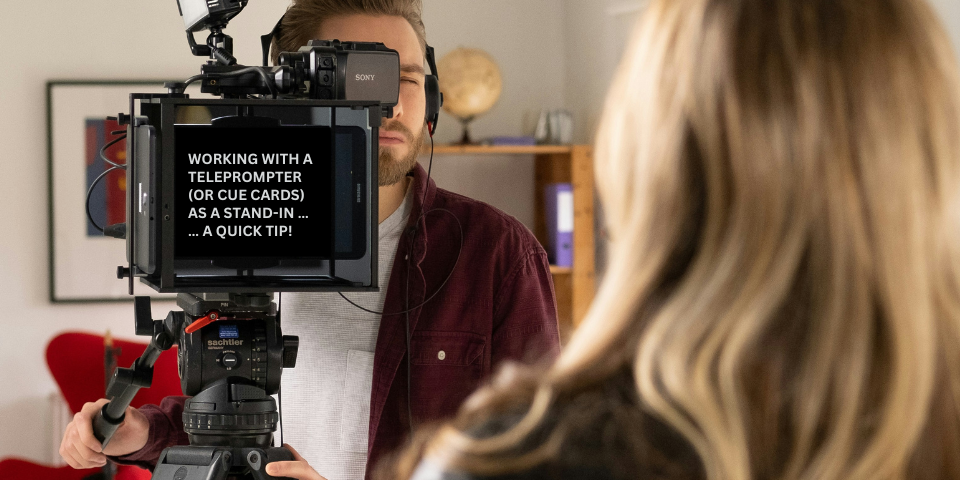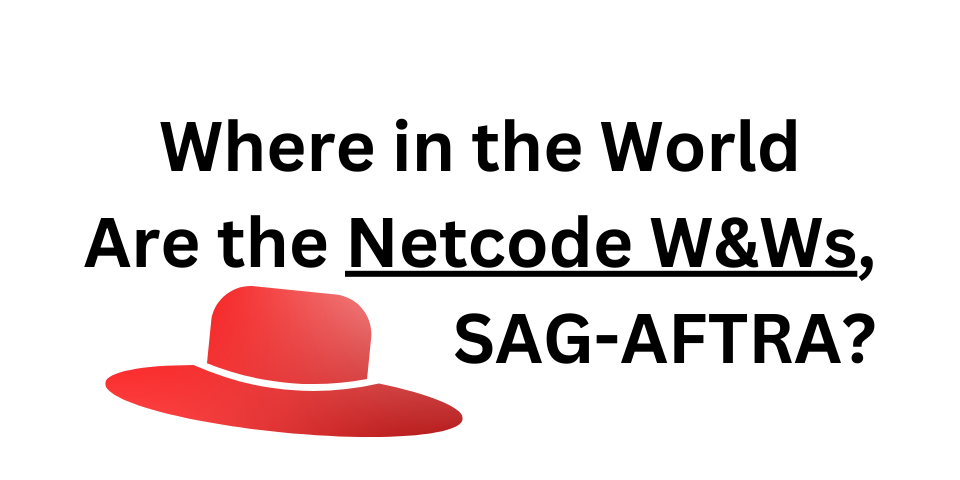On December 5, 2023, SAG-AFTRA membership provided a majority vote that ratified the proposed 2023 Theatrical & Television Agreements. These agreements came after SAG-AFTRA called a strike against employers working under these collective bargaining agreements.
With these successor agreements, stand-ins working in film and most television experienced changes in their wages and working conditions. Below are some of the changes that specifically pertain to stand-ins.
As of publication, SAG-AFTRA has not released the final contract language for the Theatrical & Television Agreements. To date, it has published a “draft” of the memorandum of agreement, off which the following descriptions are based. It is uploaded here.
Wages
Increases in stand-ins’ wages were retroactive to November 9, 2023.
Film Stand-Ins
Film stand-ins (i.e., those working under the Theatrical Agreement) received an 11% increase in their daily wage through June 30, 2024.
From July 1, 2024 – June 30, 2025, they will receive another 4% increase, followed by another 3.5% increase from July 1, 2025 – June 30, 2026.
In monetary terms, film stand-ins’ daily rate went to $243 in the first period ($30.375/hour), followed by a jump to $253 and $262 in the second and third periods of the Theatrical Agreement.
Television Stand-Ins
TV stand-ins (i.e., those working under the Television Agreement, not not those working under the Netcode, which is a different television contract) also received the same increases of 11%, 4%, and 3.5% in the same respective time periods.
In monetary terms, most TV stand-ins daily rate also went to $243, $253, and $262 in the first, second, and third periods of the Television Agreement.
However, those TV stand-ins working under the few “legacy” shows remaining had higher daily rates their their younger production counterparts, and so these stand-ins ended up with higher daily rates. For stand-ins on “Legacy Exhibit A” television series, their daily rates in the first, second, and third periods of the Television Agreement went to $251, $261, and $270.
Rehearsal Pay for Certain Stand-Ins
The draft includes the following new language to be included in Schedule X, Parts I and II (covering Los Angeles Zone and New York Zone stand-ins, respectively):
A stand-in engaged on a one-half hour multi-camera series who is required by the Producer to rehearse and/or perform (whether on or off-book) in the role of a cast member with other cast members during any run-through (e.g., a Producer run-through or network run-through but not a table read) shall receive an adjustment of an additional $150.00 for that day.
“Multi-camera series” are basically sitcoms with live studio audiences. In contrast, “single-camera series” are basically sitcoms shot more like films, without studio audiences. The terms “multi-camera” and “single-camera” are misnomers, especially considering films use multiple cameras, despite being basically viewed as “single-camera.” Basically, in the draft passage above, it is referring to stand-ins in traditional half-hour sitcoms shot with live studio audiences.
On those series, a stand-in who performs in a run-through in place of a cast member receives an additional $150 for such work. That applies except for table reads.
Some things remain unclear in this language. It is unclear why stand-ins in the described situations don’t qualify for an upgrade to (principal) performer, especially when working off-book — i.e., having to memorize lines and deliver them. It is also unclear whether the $150 payment does not apply in the event the sitcom does an extended one-hour episode, or whether the stand-in rehearses or performs in a run-through that has no other cast members in it.
Photo-Doubling & Speaking
Stand-ins frequently are hired also as photo doubles, either in addition to their stand-in work or separately purely as a photo double. In either event, fundamentally they are background actors.
Under the 2023 agreements, photo doubles asked to memorize and speak on camera are paid a $150 adjustment for that service:
When a Producer requires a background actor to do photographic doubling and to memorize and deliver scripted dialogue on camera, the background actor shall be paid an adjustment of an additional one hundred fifty dollars ($150.00) for that day.
It is unclear why photo doubles do not instantly quality as (principal) performers in such an event. On the face of it, it appears SAG-AFTRA sold photo doubles short, because speaking lines on camera tends to qualify a background actor for a upgrade to (principal) performer, which is a much bigger paycheck upgrade than a mere $150.
In addition, it appears a Producer can require a photo double to memorize scripted dialogue, but if the Producer doesn’t shoot the photo double saying the lines, the Producer can get around paying the photo double the $150. Put differently, the photo double may have to do the work of memorizing a large scene, but in the end may be unpaid for such service if the Producer doesn’t have the photo double deliver the lines on camera.
That’s Almost It. Except for…
The above terms are about the only terms explicitly applicable or obviously relevant to stand-ins. However, under the Theatrical Agreement and Television Agreement, stand-ins are a type of background actor.
Background actors also experienced changes to their working conditions under the 2023 agreements that also affect stand-ins. For the most part, these changes relate to policy notifications and the creation of digital replicas.
Notifications
Background actors, and thereby stand-ins, gained guarantees of certain notifications to employees to be posted by productions. They include:
Non-Discrimination & Anti-Harassment Policy
- “[T]he Producer shall post a copy of its non-discrimination and anti-harassment policy, which shall include instructions for reporting violations of the policy, in production areas frequented by background actors, when practicable.”
- “In addition, a copy of the policy shall be made available to a background actor online via the background casting agency or electronic voucher application, as applicable, or upon request from the Second Assistant Director or other designated production personnel responsible for overseeing background actors.”
Note that a copy of the non-discrimination & anti-harassment policy may be made available on an “electronic voucher application” but is not necessarily required on a paper voucher. Also note that a producer does not need to post the non-discrimination & anti-harassment policy in production areas frequented by background actors if it is not practicable to do so — whatever that means. (It is unclear who is the measurer of practicability in such cases.)
Also note that stand-ins do not always frequent the same production areas as standard background actors, so stand-ins not seeing this information may need to go to production areas frequented by background actors to view it, especially if it is not provided online by the background casting agency and the stand-in opts for a paper voucher.
Nudity & Sex Acts
- “The Producer’s representative will notify the background actor of any nudity or sex acts expected in the role (if known by Producer at the time) prior to an interview or audition.”
- “The casting notice shall specify any nudity or sex acts expected in the role and/or any nudity required in the interview or audition if known by Producer at the time of its issuance.”
- “The Producer’s representative will notify background actor of any nudity or sex acts expected in the role (if known by management at the time) as soon as practicable, but no later than forty-eight (48) hours prior to the background actor’s call time on the day the scene is to be shot […]”
- “[…] unless the Producer has engaged the background actor less than forty-eight (48) hours in advance of the background actor’s call time on the day the scene is to be shot. In those cases, the notice shall be provided at the earliest practicable time. at the time of the call.”
- “When a Producer utilizes a background actor casting agency to hire background actors for a scene which the Producer expects will require nudity and/or sex acts of the background actor, it shall provide the background actor casting agency with as much information as possible (to the extent known by the Producer at the time) regarding what will be required of the background actor in the nude and/or sex scene.”
- “The Producer will instruct the background actor casting agency to communicate this information to prospective background actors prior to booking, so that the prospective background actor can decide whether to accept the engagement.”
- “If not notified of nudity and/or sex acts within the time required […] above in advance, the background actor retains the right to refuse and is entitled to a full day of pay without prejudice. Producer retains the right to require the background actor to do other background actor work, in lieu thereof, if such other background actor work exists.”
Note that neither Producers nor stand-ins may know their actors’ characters will be involved in nudity or sex acts prior to the stand-in interview, especially in television when episodes might not yet be written. So, a stand-in may land the job without prior notification that the role may involve nudity or sex acts. Rarely, though, do stand-ins work in the nude or need to perform (the impression of) sex acts in their work.
With that said, stand-ins should receive notification of any nudity or sex acts expected in the stand-in work no later than 48 hours prior to the call time. If they don’t receive such notification, and if they refuse to do the subsequent work nudity or sex acts work, they are entitled to a “full day of pay without prejudice” but can be reassigned to other background work that day. It is unclear what a “full day of pay” constitutes, especially if the scene takes overtime hours to complete.
Digital Replicas & Consent
Starting around 90 days after December 5, 2023 (approximately March 4, 2024), Producers may start creating “Background Actor Digital Replicas.” There are two different species of “digital replica”: “employment-based” and “independently created”:
- “An ‘Employment-Based Digital Replica’ is a replica of the voice or likeness of the performer that is created: (i) in connection with employment on a motion picture under this Agreement; (ii) using digital technology; (iii) with the performer’s physical participation; and (iv) is for the purpose of portraying the performer in photography or sound track in which the performer did not actually perform.”
- “An ‘Independently Created Digital Replica’ is a digitally-created asset that is: (i) intended to create, and does create, the clear impression that the asset is a natural performer whose voice and/or likeness is recognizable as the voice and/or likeness of an identifiable natural performer; (ii) performing in the role of a character (and not as the natural performer himself/herself); and (iii) no employment arrangement for the motion picture in which the Independently Created Digital Replica will be used exists with the natural performer in the role being portrayed by the asset.”
As for a specific definition of the term “Background Actor Digital Replica,” the agreements states the following:
- “[A] ‘Background Actor Digital Replica’ of a background actor is a replica of the voice or likeness of the background actor which is created using digital technology with the background actor’s physical participation and is for the purpose of depicting the background actor in a scene in which the background actor did not actually appear.”
- “[This section of the agreements] does not apply to ‘tiling’ of background actors.”
In other words, the process of tiling background actors is not the same thing as making a background actor digital replica.
Work Time Creating a Digital Replica
As for the agreements, they say that when a Producer wants to require a background actor to submit to creation of a background actor digital replica, usually it will happen on the same day as doing background work, and any time spent creating that digital replica will be work time. If called in on a day when not doing background work, then time spent creating that digital double will guarantee at least the daily wage for a background actor.
Booking Notice of Digital Replica Creation
When it comes to booking, a Producer basically has to notify the background actor at booking when the Producer requires the background actor to create a digital replica. There is some mention of no less than 48-hours advance notice the Producer must give the background actors, but it does not seem the Producer is subject to any penalty for failing to do so, and bookings frequently only occur within about 24-hours notice or less anyway.
What Consent Must Look Like & Say
As for consent, “the Producer must obtain consent if it requires the background actor to provide services for purposes of creating the background actor’s Background Actor Digital Replica for use in connection with a motion picture” (bolding added for clarity).
“A Producer may not use a background actor’s Background Actor Digital Replica in connection with a motion picture other than one for which the background actor was employed or in any other field or medium without obtaining the background actor’s consent and bargaining separately for the use” (bolding added for clarity).
Effectively, a background actor’s consent is production-specific, and if another production wants to use the background actor’s digital replica, it must bargain with that background actor and also obtain that background actor’s consent.
As for what the consent must be for the Producer to use the background actor’s digital replica, “The consent must be clear and conspicuous” and “include a reasonably specific description of the intended use of the Background Actor Digital Replica in that motion picture.” It is unclear whether the consent is valid if the background actor signs or initials to a consent that is inconspicuous, unclear, or fails to be reasonably specific in describing the intended use in the motion picture.
As for how the Producer may obtain this consent, it “may be obtained through an endorsement or statement in the background actor’s employment paperwork or voucher […],” “separately signed or initialed by background actor or in a separate writing that is signed by the background actor.” Effectively, a background actor cannot give consent through bundled language — consent for creation of a digital replica must have its own separate consent for which the background actor signs or initials.
The Producer may obtain the background actor’s consent from the background actor, or if deceased, from the background actor’s “authorized representative” or from SAG-AFTRA (“if the deceased background actor’s authorized representative cannot be identified or located”).
The background actor’s consent to use the digital replica extends postmortem “unless explicitly limited otherwise.”
Other Bits
There are additional items about digital alteration of background actors and circumstances that trigger upgrades for background actors when their digital replicas are used in certain ways. That starts to get too far outside the topic of stand-ins, so we leave that for you to review.
That’s About It
There may be other items of interest to stand-ins in the 2023 Theatrical Agreement and Television Agreement, but this covers most items of interest.
What are your thoughts on these changes? Post your reactions in the comments below!







Leave A Comment